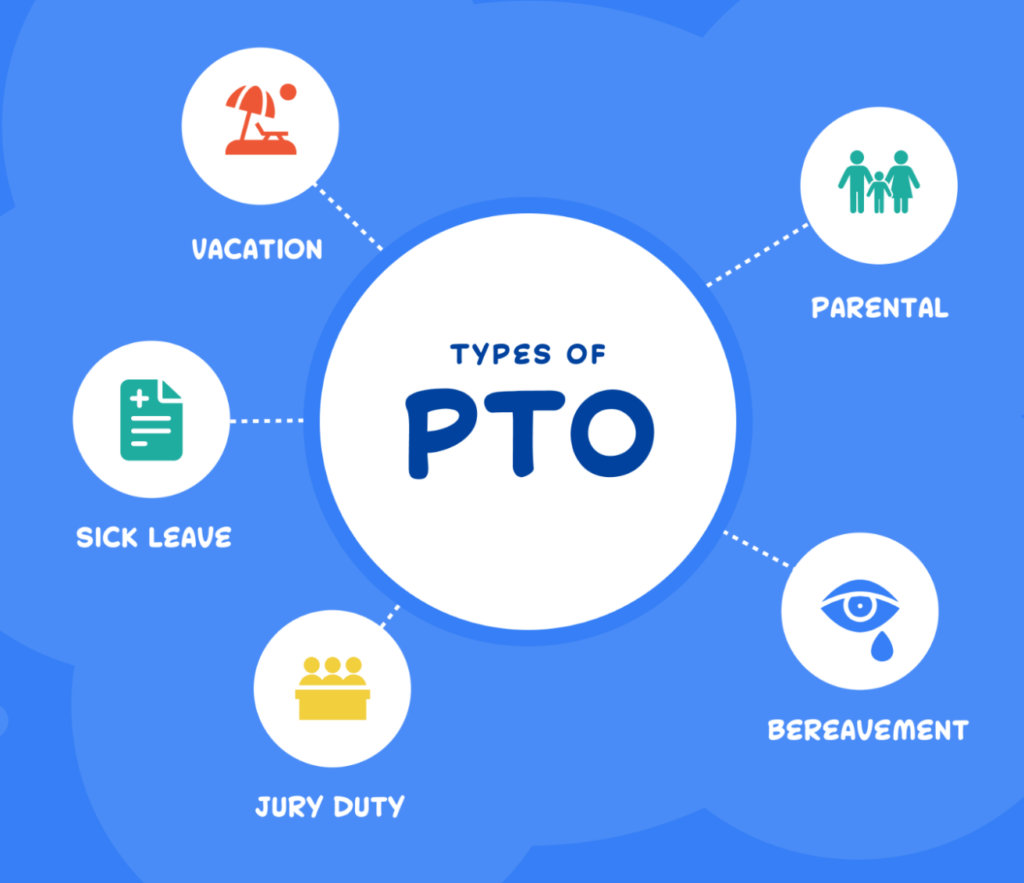Managing PTO (Paid Time Off) is designed to give employees the flexibility to take time away from work for a variety of reasons, including vacation, personal time, or health issues. While PTO can significantly enhance job satisfaction and promote a better work life balance, it presents several administrative challenges for human resources departments. Let’s discuss PTO management, common challenges and suggesting effective strategies to address them.
1. Balancing Employee Needs with Business Operations
One of the primary challenges in PTO management is to balance the individual needs of employees with the operational requirements of the organization. This issue becomes particularly acute during peak business periods or major project deadlines when multiple time off requests can lead to staffing shortages and reduced productivity. Companies need to establish fair, clear, and consistently applied policies to manage these requests effectively, ensuring minimal disruption while maintaining workforce morale.
2. Accurate Tracking and Record Keeping
Effective PTO management is highly dependent on the precise tracking of accruals, usage, and remaining balances of employee leave. Inaccuracies in record keeping can lead to employee grievances, payroll errors, and legal issues. The transition from manual tracking systems to automated software solutions has helped many organizations improve accuracy and efficiency. However, these systems require continuous updates and checks to adapt to changing regulations and company policies.
Day Off designed to assist both employers and employees in managing Paid Time Off (PTO) effectively. Here’s how you can use this platform in managing PTO:
For Employers:
Setting Up Company PTO Policies
Configure Policies: Begin by setting up your company’s specific PTO policies within the platform. This includes defining accrual rates, carryover limits, and types of leave available (such as vacation, sick leave, and personal days).
Employee Management
Add Employees: Input details about your employees, including their start dates, employment status (full/part-time), and any other relevant information that affects PTO accrual.
Approval Workflow
Review Requests: Implement an approval workflow where employees can submit PTO requests through the platform. Managers can review, approve, or Reject employee’s leave request based on team availability and individual PTO balances.
Notifications: Set up notifications to alert managers of new requests.
Reporting and Analytics
Generate Reports: Use the platform’s reporting tools to generate insights into PTO usage patterns, identify trends, or prepare for peak vacation times.
For Employees:
Submitting PTO Requests
Submit Requests: Easily submit PTO requests by selecting dates and the type of PTO you are requesting. You can view your accrued PTO balance to make informed decisions about your time off.
Managing PTO
View PTO Balance: Check your current PTO balance anytime to see how much time you have available for use.
Track Status of Requests: Follow the progress of your PTO requests, from submission to approval or rejection, and plan accordingly.
Notifications
Stay Informed: Receive notifications regarding the approval status of your PTO requests, and upcoming scheduled PTO.
Integration and Accessibility
Mobile Access: Day Off offers a mobile version, employees can manage their PTO requests and view balances on the go, while managers can approve requests, ensuring flexibility and responsiveness.
Integration: The platform offers integration with calendars like Google Calendar and Outlook, as well as Slack and Microsoft Teams, syncing PTO schedules across platforms for better resource planning.
3. Legal Compliance and Variability
Compliance with labor laws regarding leave is a critical challenge, especially in jurisdictions with complex and varying requirements related to minimum leave entitlements, accrual methods, and payout obligations upon termination. Multi state or global operations compound these challenges, as companies must comply with differing laws across various regions. Continuous education and updates for HR teams are necessary to navigate these legal complexities and avoid costly penalties.
4. Handling Unscheduled Absences
Unscheduled absences, such as those due to sudden illness or emergencies, can disrupt planned activities and workflows. These absences require quick adjustments and flexible management to maintain productivity without overburdening other employees. Policies addressing unscheduled leave need to balance flexibility and control, ensuring they deter misuse while providing necessary support for genuine cases.
5. Preventing Burnout and Encouraging PTO Utilization
A significant issue in PTO management is encouraging employees to take allotted leave to prevent burnout. Some employees may accumulate leave either because of excessive workloads, workplace culture, or personal choice, potentially leading to stress and decreased productivity. Organizations should foster an environment where using PTO is not only accepted but encouraged, and where management leads by example.
6. Integration with Other Leave Types
Organizations often offer various leave options, such as maternity/paternity leave, sick leave, and bereavement leave. Integrating these with PTO policies can be complex. HR must ensure clear distinctions and seamless coordination between different types of leave, providing comprehensive guidelines so employees understand how to apply and how each leave type affects their PTO balance.

7. Ensuring Fairness and Transparency in PTO Allocation
The perception of fairness and transparency in the allocation of PTO is vital for maintaining employee trust and satisfaction. Inconsistencies or favoritism in handling leave requests can lead to dissatisfaction and morale issues. It is imperative for HR to implement and uphold policies that are equitable and transparent, with a clear process for addressing and resolving disputes.
8. Technological Integration and Data Security
With the rise of digital HR solutions, integrating PTO management systems with other HR functions such as payroll and employee benefits poses technical and security challenges. Ensuring that sensitive employee data is protected while allowing seamless access and functionality requires robust IT support and cybersecurity measures.
Conclusion
Managing PTO effectively is multifaceted, requiring strategic planning, detailed administration, and continuous adaptation to legal and technological changes. Organizations that successfully navigate these challenges not only comply with legal standards but also create a supportive workplace environment that values and respects employee well being. Implementing advanced PTO management systems, developing clear and fair policies, and maintaining open lines of communication are crucial to achieving these goals.
